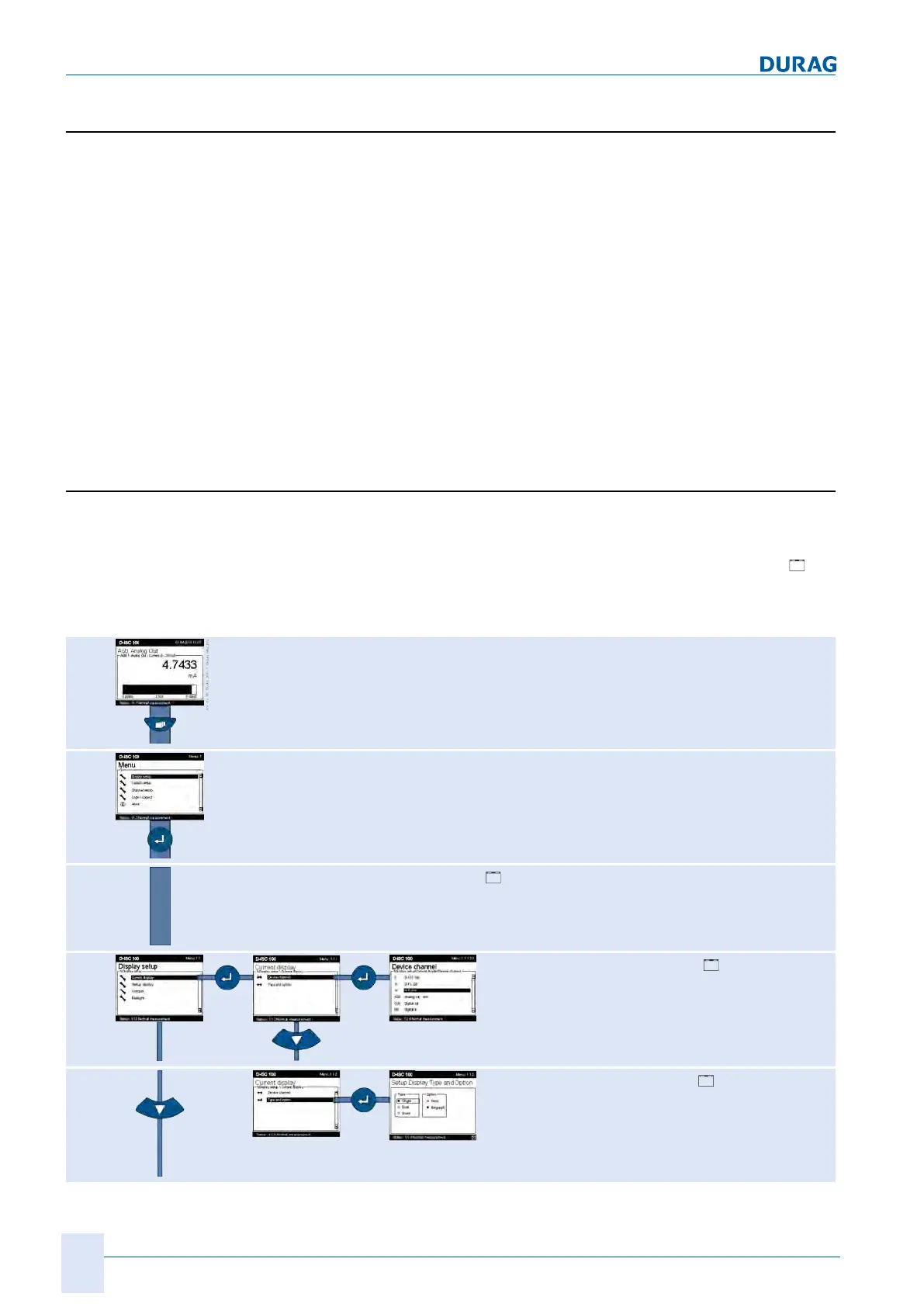15 | Examples of settings
156
D-ISC 100 x xx2
15 Examples of settings
In this chapter we explain by means of examples how you can
make settings on the Universal control unit D‑ISC100. The ex-
amples are structured so that you can follow then step by step.
For the individual steps, proceed in accordance with the
D‑ISC100 menu path (for an explanation of this, see Section7.1
Navigation guide within this manual [}79]). Comments on the
settings are included in the appropriate text where necessary.
Please note that the data presented in the examples (for in-
stance the menu numbers: 1.1.1.3.1 or device names: D-R 220)
depend on the connected devices and their individual settings. If
you follow through our
examples
, because of the individual se-
lection on your system you may see quite different data dis-
played.
15.1 Example: Display setup
The following
example
shows how the display can be set up. The
setup relates to the composition of the ["Current Measurement
display"] and the ["Measurement display after system start"
].
The contrast and backlight setting is also indicated.
Press on the pictured keys to move from one display to the next.
A Display:
Measurement display
M1 Menu: Display setup
[
Current Measurement display]
Settings for the current measured value/status dis-
play
M1.1
1.1.1
[ Device channel]
Selection of the currently displayed measured
value/status display
M1.1
1.1.2
[ Type and option]
Section of the measured value display format
Option: Select display bar graph
